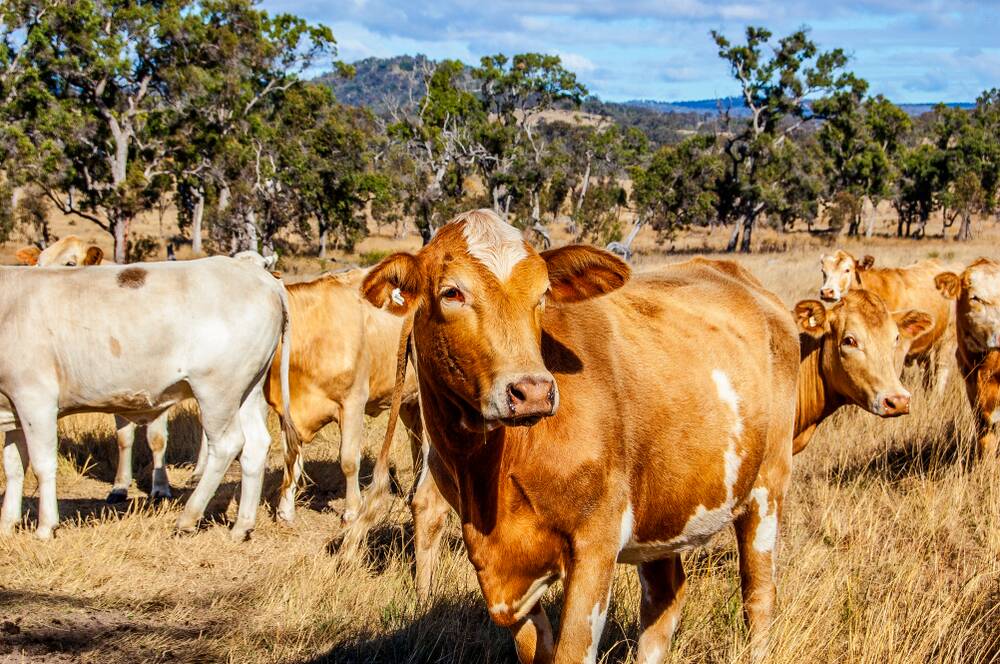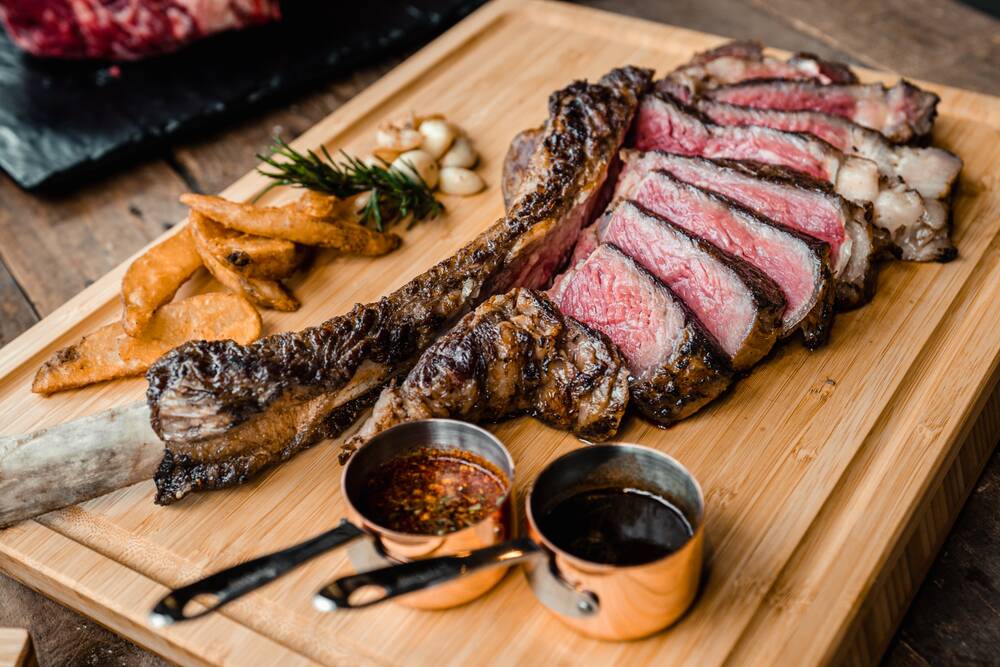Grass-fed beef in Australia: Benefits and sustainable farming practices

This is branded content.
Are you a certified carnivore?
If your idea of a great dining experience usually includes steaks, sausages, or burgers, then you must have heard about or even sampled the tasty delight that is Australian grass-fed beef!
Australian meat products are sought after worldwide because of their top-notch quality that always hits the mark, so having them in a meal can be considered a meat lover's dream.
What makes Australian grass-fed beef stand out from the rest, you might wonder?
Australia's vast landscapes and commitment to sustainable agriculture have positioned it as a global leader in producing high-quality, grass-fed beef.
Besides this, they've also perfected quality control to ensure that they only serve the world nothing but the best!
This guide delves into the multifaceted benefits of Australian grass-fed beef, from its superior nutritional profile to the environmental advantages of grass-based farming practices.
It's time to explore why connoisseurs and eco-conscious consumers are choosing to taste the quality of our grass-fed beef.
Continue reading, learn more, and have a meaty feast!
A closer look at Australian grass-fed beef's quality
Grass-fed beef comes from cattle that have eaten only grass and other foraged foods.
Conventional beef cattle are often raised on a diet that includes grains, such as corn, to increase their growth and size.
In contrast, grass-fed cattle can graze on pasture, eating various grasses, herbs, and legumes.
The term 'grass-fed' can sometimes be accompanied by other qualifiers, such as 'grass-finished' or "100% grass-fed," indicating that the animals were fed grass for their entire lives, with no grain finishing period.
Standards and certifications for grass-fed beef can vary by country and organisation, affecting what qualifies as grass-fed.

The elevated flavour profile of Australian grass-fed beef
The discerning palates of beef enthusiasts can instantly detect the difference in flavour profile between grass-fed and grain-fed beef.
Australian grass-fed beef is celebrated for its distinct, rich flavour and tender texture, a direct result of the diverse, natural diet available to cattle.
The grasses across Australia's regions impart unique flavour notes to the beef, making each cut a meal and an experience.
The superior flavour of Australian grass-fed beef is attributed to several factors.
Here's why the taste of Australian grass-fed beef stands out:
The discerning palates of beef enthusiasts can instantly detect the difference in flavour profile between grass-fed and grain-fed beef. Australian grass-fed beef is celebrated for its distinct, rich flavour and tender texture, a direct result of the diverse, natural diet available to cattle. The grasses across Australia's regions impart unique flavour notes to the beef, making each cut a meal and an experience.
The superior flavour of Australian grass-fed beef is attributed to several factors. Here's why the taste of Australian grass-fed beef stands out:
Natural and varied diet
Australia's vast landscapes offer various natural grasses and vegetation.
This diversity in the cattle's diet contributes to developing a more complex and nuanced flavour profile in the beef.
Specific types of grasses can impart subtle flavour differences, which are often described as more robust and earthy compared to grain-fed beef.
Terroir
Like wine, the concept of terroir-the natural environment in which the beef is produced, including soil, topography, and climate-plays a significant role in the flavour of grass-fed beef.
The unique conditions of different Australian regions can influence the quality and taste of the grasses consumed by the cattle, leading to regionally distinct flavours in the beef.
Healthier fats and muscle composition
Grass-fed beef tends to have higher levels of omega-3 fatty acids compared to grain-fed beef.
These fats benefit health and contribute to the beef's flavour, giving it a richer taste.
Optimal fat marbling
While grain-fed beef might have more marbling (intramuscular fat), grass-fed beef from Australia often features a more optimal and natural level of fat marbling.
This results in tender and flavorful meat without being overly fatty.
Quality of life and stress levels
Natural grazing and roaming in open pastures ensure that cattle experience less stress, which can affect the quality of their meat.
Stress can lead to tougher meat, while a more relaxed environment contributes to tender beef with a superior taste.
Strict standards and practices
Australian grass-fed beef producers adhere to strict quality and sustainability standards, ensuring the cattle are raised optimally.
This commitment to quality from farm to table ensures the cattle's well-being and consistently results in a superior-tasting product.
These factors combine to produce healthier, richer, and more flavorful beef, making it a preferred choice for both chefs and consumers globally.
Nutritional superiority
One of the most compelling reasons to choose grass-fed beef is its enhanced nutritional benefits.
Grass-fed beef is known for its higher concentrations of essential nutrients:
Omega-3 fatty acids
Essential for heart health, these are more abundant in grass-fed beef than their grain-fed counterparts.
Conjugated linoleic acid (CLA)
Linked to reduced body fat and improved immune function, CLA levels are significantly higher in grass-fed beef.
Vitamins and antioxidants
Vitamin E and beta-carotene, essential for maintaining healthy skin and eyes, are found in more significant amounts in grass-fed beef.
This superior nutritional profile supports a healthier lifestyle and aligns with the increasing consumer demand for food products that contribute to overall well-being.
Sustainable farming practices
Australian farmers are at the forefront of integrating sustainable practices into their cattle farming operations.
Grass-fed beef production plays a critical role in these efforts, offering several environmental benefits:
Lower carbon footprint
Grass-fed beef farming has a lower carbon footprint than grain-fed beef production, mainly due to the reduced need for feed production and transportation.
Enhanced biodiversity
Pasture-based farming supports a broader range of plant and animal life, contributing to biodiversity.
Soil health
Grazing practices associated with grass-fed beef farming can improve soil health through natural fertilisation and reduced erosion.
These sustainable farming practices ensure the long-term viability of Australia's beef industry and contribute to global environmental preservation efforts.
Ethical considerations
Animal welfare is another significant aspect of grass-fed beef production.
Cattle raised on pasture enjoy a more natural lifestyle, with the freedom to graze and roam.
This approach aligns with growing consumer expectations for ethically raised meat products, where animal welfare is prioritised.
A global standard
Australia's stringent quality controls and commitment to sustainable, ethical farming have set a global standard for grass-fed beef production.
From farm to table, Australian grass-fed beef represents a pinnacle of quality, taste, and environmental stewardship.
Conclusion
By embracing Australian grass-fed beef, consumers enjoy a superior product and contribute to a more sustainable and ethical food system.
As the demand for cleaner, more nutritious, and responsibly produced food continues to grow, Australia's grass-fed beef industry is poised to meet this challenge, proving that great taste and environmental responsibility can go hand in hand.


